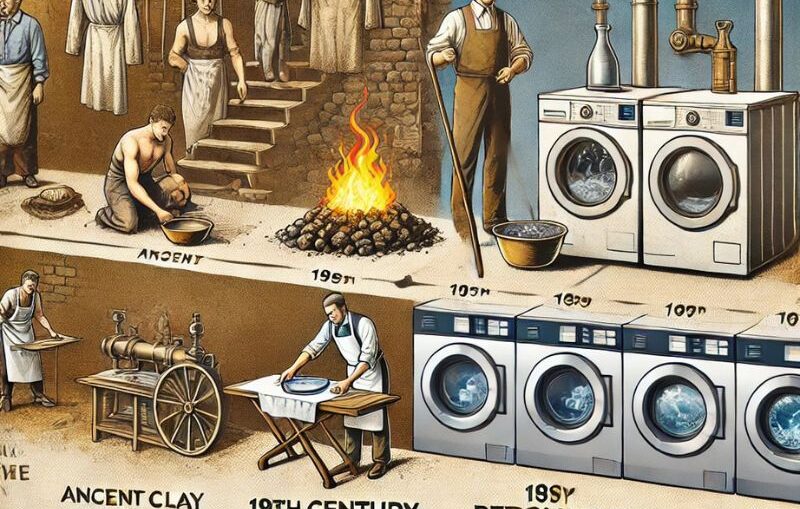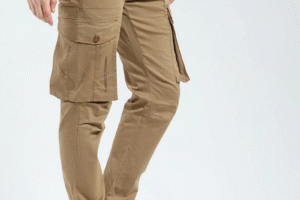When you drop your delicate garments off at your local dry cleaners Paschim Vihar, you probably don’t stop to think about how the dry cleaning industry came to be. But the truth is, the history of dry cleaning is a fascinating journey that reveals how human innovation, chemistry, and fabric care have evolved over centuries. From ancient grease-removal tricks to modern eco-friendly techniques, dry cleaning has truly transformed the way we clean clothes. This guide will take you through a detailed, engaging look at the history of dry cleaning, providing valuable insights, especially for working professionals, families, households, and boutique owners who rely on garment care regularly.
The Ancient Beginnings of Dry Cleaning
The earliest traces of dry cleaning date back to Ancient Rome. Historical records show that Romans used a substance called fuller’s earth, a type of clay, to remove oil and grease stains from togas. Laundry workers, known as “fullers,” combined this clay with alkaline substances like lye and ammonia (even urine was used!) to clean garments without water. While it was crude, this method laid the foundation for what we now consider dry cleaning. Even in ancient times, people recognized that water was not always the best choice for certain fabrics.
The 19th Century Spark: Modern Dry Cleaning is Born
The turning point in the history of dry cleaning occurred in the 19th century in France. A tailor named Jean-Baptiste Jolly noticed that his tablecloth became cleaner when his maid accidentally spilled kerosene (a petroleum-based solvent) on it. Inspired by this, Jolly began experimenting with solvents to clean clothes without using water. In 1855, he opened the first dry cleaning business in Paris using petroleum-based solutions. This innovation changed the future of fabric care and gradually spread to other parts of Europe and America.
Dry Cleaning Enters the Industrial Age
As the popularity of dry cleaning grew, so did concerns about the flammability of petroleum-based solvents. In response, early 20th-century chemists began developing safer alternatives. One of the most widely adopted solutions was perchloroethylene (also known as “perc”), which became the industry standard by the 1930s. Perc was a non-flammable solvent that cleaned garments efficiently and quickly, revolutionizing the business for commercial dry cleaners in Paschim Vihar and across the globe. However, over time, its environmental and health impacts also became clear.
Environmental Awareness and Safer Solutions
The rise of environmental movements in the 1970s and 80s brought attention to the harmful effects of perc. It was discovered to be toxic to both the environment and human health when not handled properly. As a result, regulatory bodies, especially in the United States and Europe, began enforcing safety measures and encouraging alternative cleaning methods. This era in the history of dry cleaning marks a pivotal shift from purely chemical-based cleaning to more sustainable practices. Today, eco-friendly solvents like liquid carbon dioxide and silicone-based cleaners are being adopted by many forward-thinking dry cleaners.
The Digital Age and Smart Dry Cleaning
In the 21st century, technology has taken dry cleaning to a new level. From online booking systems to smart inventory management, digital tools have improved convenience for customers and efficiency for business owners. For example, many dry cleaners in Paschim Vihar now offer doorstep pickup and delivery services through apps or websites. This shift not only improves customer experience but also shows how dry cleaning has evolved into a modern, tech-savvy industry. Boutique owners and busy professionals benefit greatly from these innovations as they streamline garment care in their packed routines.
Impact on Fashion and Retail Businesses
For boutiques and fashion retailers, understanding the history of dry cleaning is more than just an interesting tale—it’s a business essential. Delicate fabrics like silk, velvet, and chiffon require specialized care that dry cleaning provides. Over the decades, the evolution of this industry has made it easier for businesses to maintain inventory, offer cleaning recommendations, and preserve garment quality for customers. Families and households also gain peace of mind knowing their clothes are being cared for with expert methods refined through centuries of trial, error, and scientific progress.
Dry Cleaning in India: A Cultural Evolution
While the concept of dry cleaning originated in Europe, it quickly found relevance in India, especially in urban centers like Delhi. Over time, localized adaptations were made to suit Indian garments such as sarees, lehengas, and sherwanis, which often included embroidery, sequins, and delicate fabrics. Local dry cleanersin Paschim Vihar and in other regions have played a key role in preserving traditional attire through customized cleaning solutions. This cultural evolution makes the history of dry cleaning even more diverse and meaningful.
How the Past Shapes Our Present Choices
Today’s consumers are more conscious about what touches their skin, how garments are treated, and the environmental cost of cleaning methods. The rich history of dry cleaning shows us how we’ve progressed from rudimentary clay treatments to advanced, eco-conscious solutions. It helps us appreciate the services offered by modern dry cleaners in Paschim Vihar, who blend historical knowledge with the latest technology to offer effective, safe garment care.
Final Thoughts
The history of dry cleaning is more than just a timeline—it’s a story of human ingenuity, scientific progress, and an ongoing effort to balance convenience with responsibility. Whether you’re a busy working professional, a parent managing family laundry, or a boutique owner striving to maintain the quality of your apparel, dry cleaning plays a critical role in your everyday life. The next time you visit dry cleaners in Paschim Vihar, you’ll know that you’re stepping into a service that has been centuries in the making—refined, reliable, and ready for the future.







